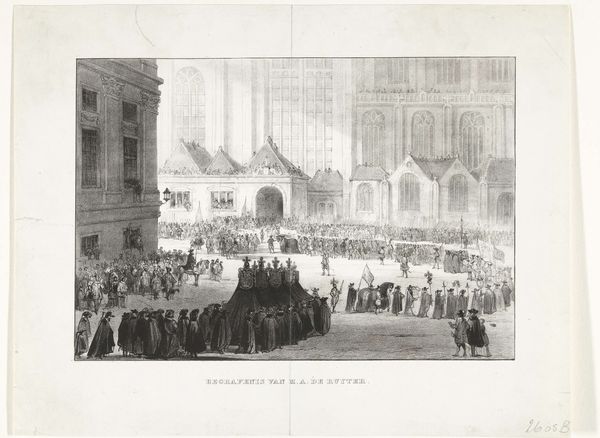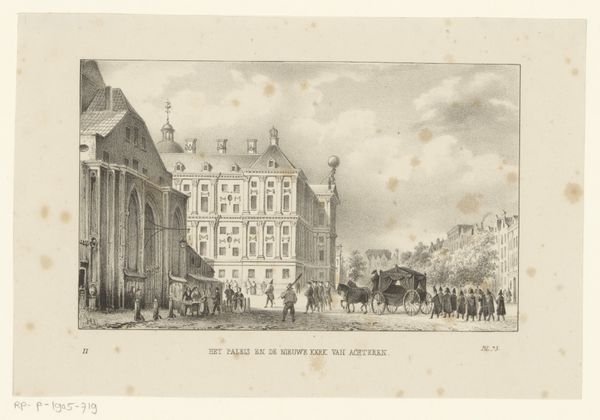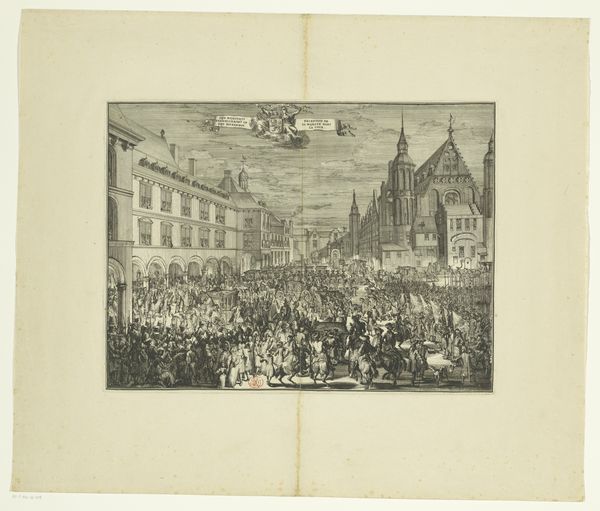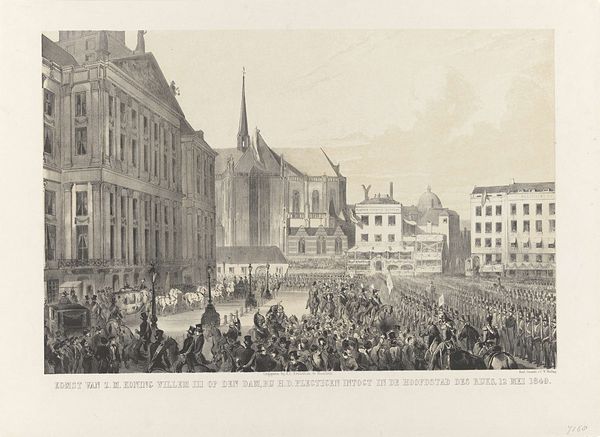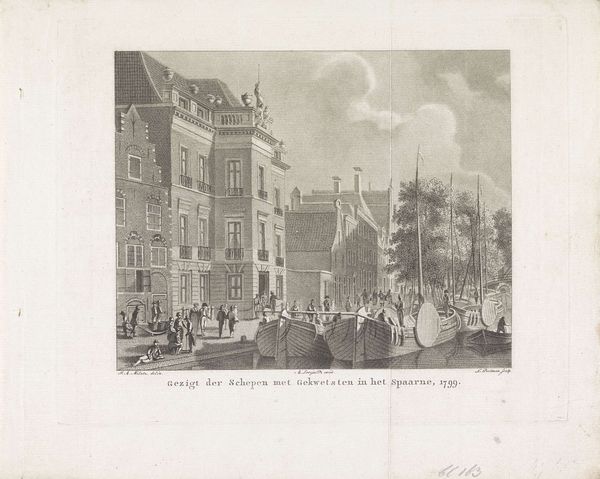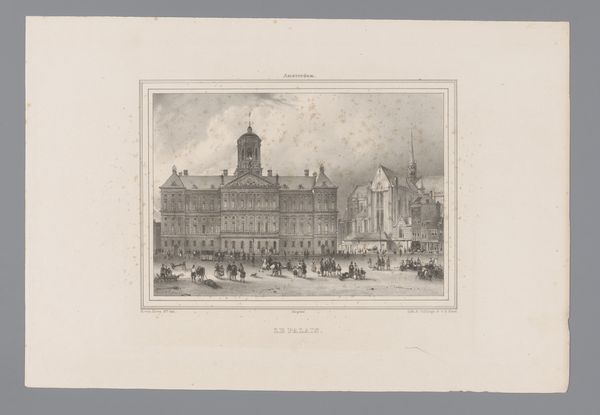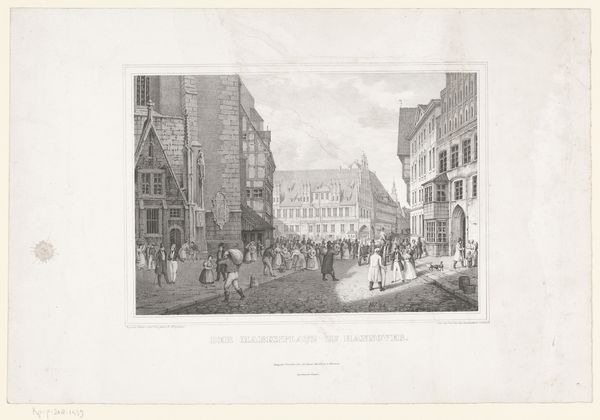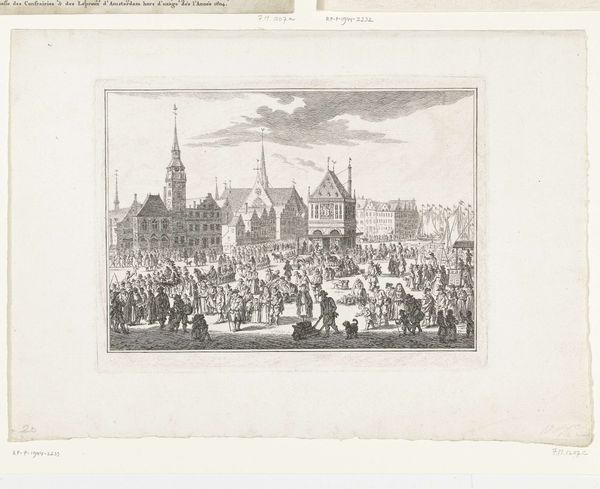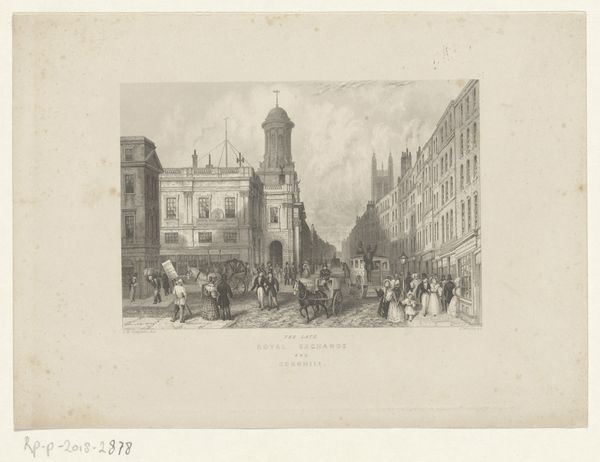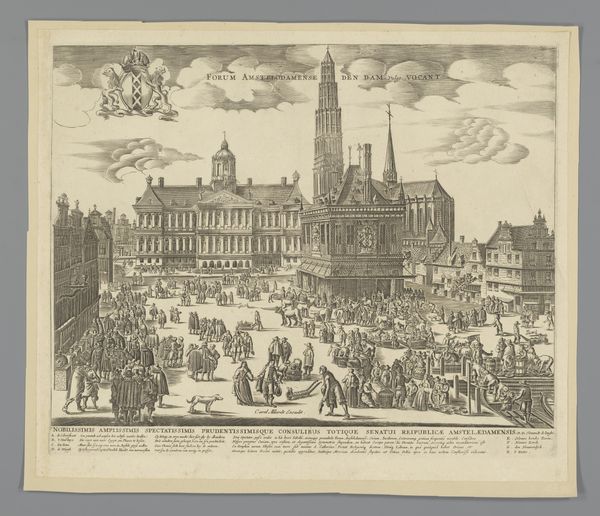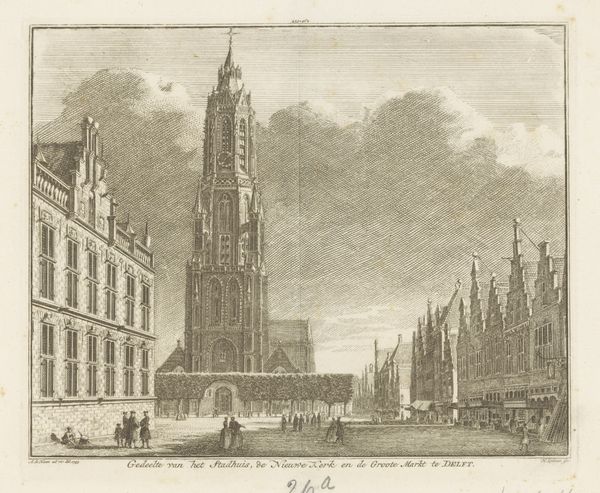
Onthulling te Amsterdam van het Gedenkteeken aan den Volksgeest van 1830 en 31, dato 27 Aug.s 1856 1856 - 1858
0:00
0:00
drawing, print, engraving
#
drawing
#
neoclacissism
#
statue
#
16_19th-century
# print
#
old engraving style
#
white palette
#
cityscape
#
engraving
Dimensions: height 257 mm, width 337 mm
Copyright: Rijks Museum: Open Domain
Curator: Looking at this print, the first word that jumps to mind is 'orderly.' Rows of people, architecture regimented...It’s a scene striving for composure. Editor: This is an engraving depicting the unveiling of a monument in Amsterdam. The work, created between 1856 and 1858 by an anonymous artist, memorializes the “Volksgeest” - the national spirit of 1830-31. The text specifies the date shown, August 27th, 1856. Curator: The white palette certainly contributes to that impression, even if it’s born of the engraving technique itself. It's like the artist used light itself as a tool to evoke the neoclassicism movement. A bright scene of civic virtue. Do you get that sense of…restraint? Editor: Absolutely. The neoclassical aesthetic served a clear purpose here. Commemorating the Volksgeest—likely referring to the Belgian Revolution and the Dutch response—was a politically charged act. Orderly art reflects desired orderly politics. These events are visualized as grand urban theatre. The statue becomes a key part of how Amsterdam views itself, doesn’t it? Curator: Oh, it completely re-writes the space. The people almost feel secondary to the geometry of it all—the palace, the church, and then this newcomer, bang in the center. As a drawing, though, its so odd in terms of depth - figures in the distance are sometimes bolder than those in the front. Editor: Interesting observation, but consider: Prints like these served as records. Disseminating this imagery allowed more folks than could physically be present to see, and participate in, the memorial's aura and purpose. Artistic 'flaws' can sometimes be a matter of prioritization. How to transmit the 'idea' of this unveiling and monument most efficiently. Curator: So it's less about visual trickery and more about documentary… honesty? It certainly adds another layer to how the artwork communicates, knowing the socio-political background behind the drawing, but as it presents to me, an artwork expressing civic composure, not some sort of perfect spatial depiction, but an organized and politically charged depiction nonetheless. Editor: Precisely. It reveals how a society consciously constructs its historical narrative and literally builds monuments to reflect this self-image. And how artistic choices amplify those intentions.
Comments
No comments
Be the first to comment and join the conversation on the ultimate creative platform.
